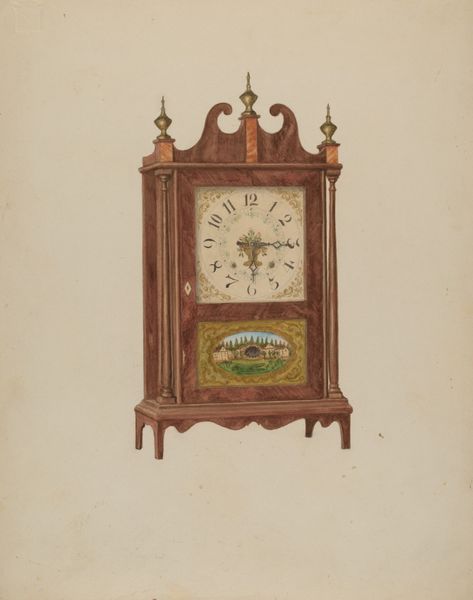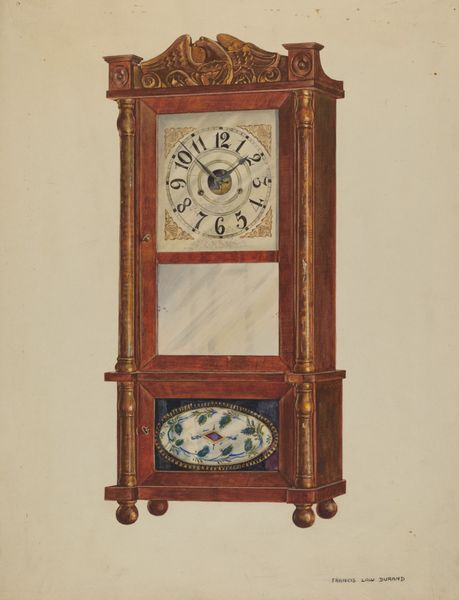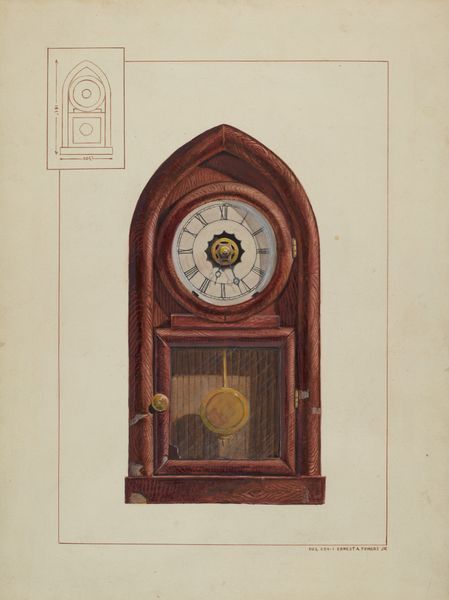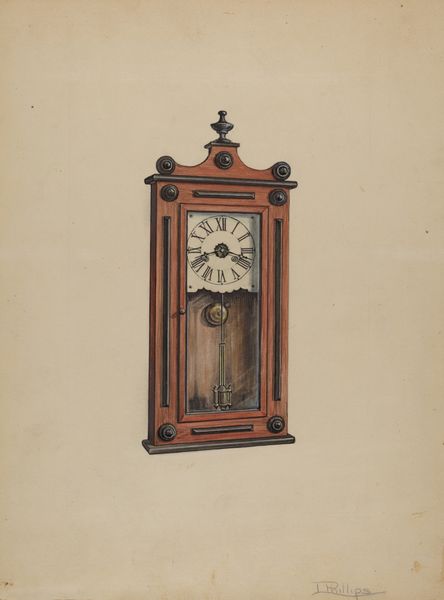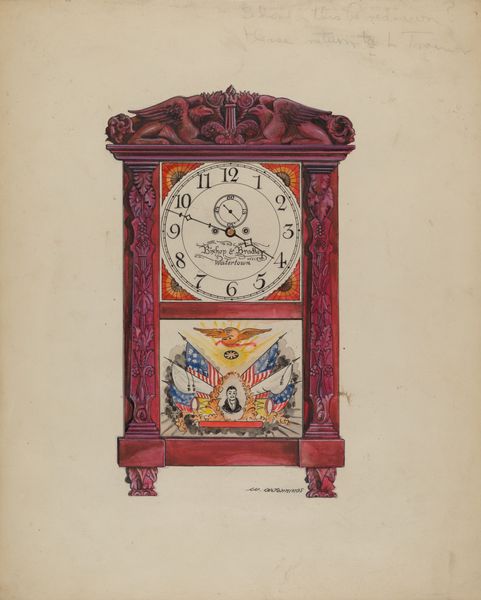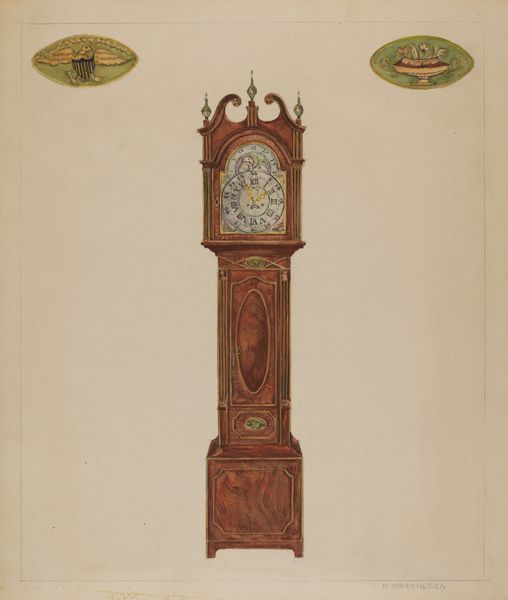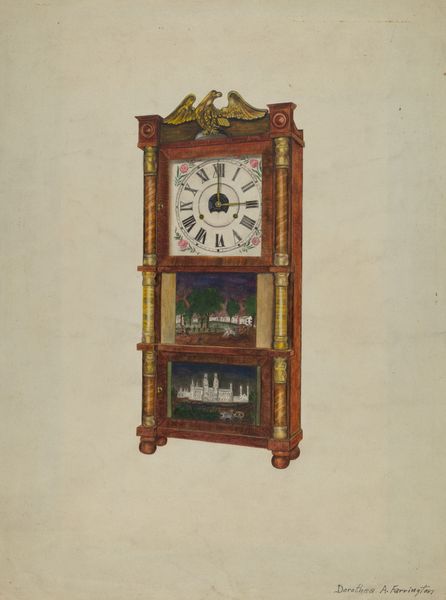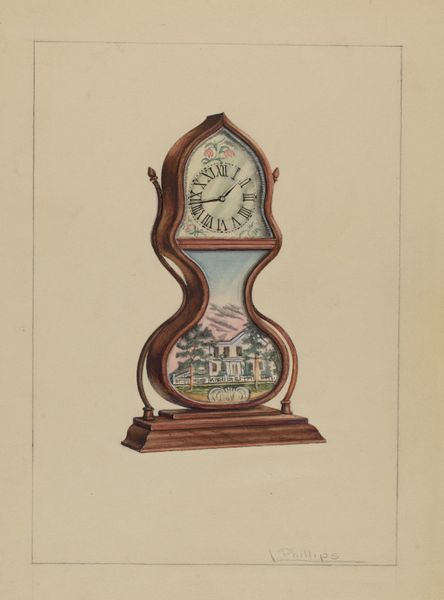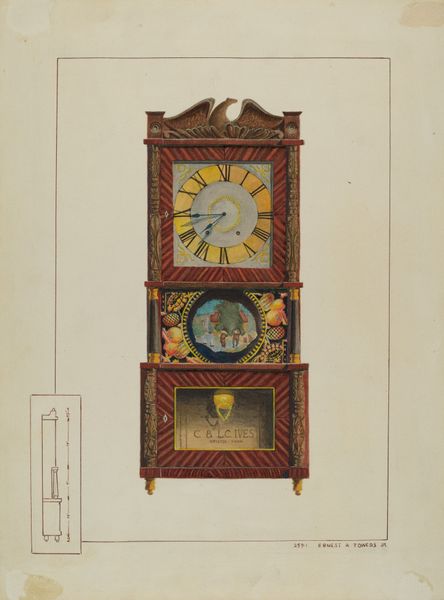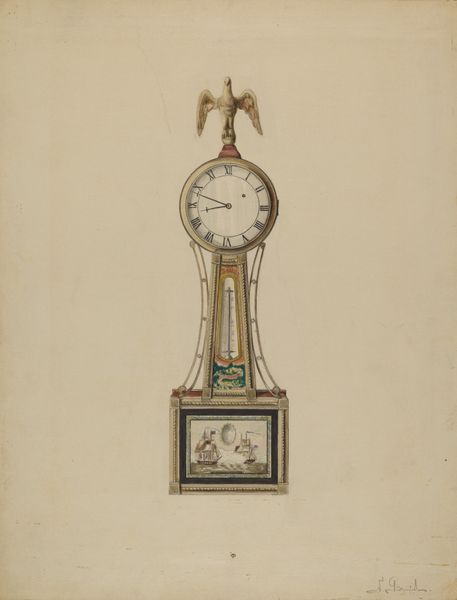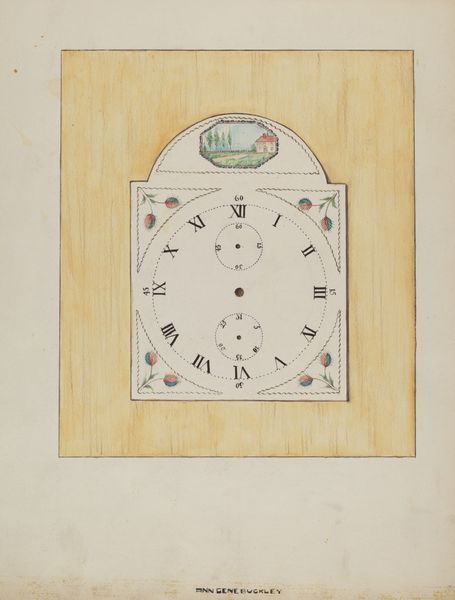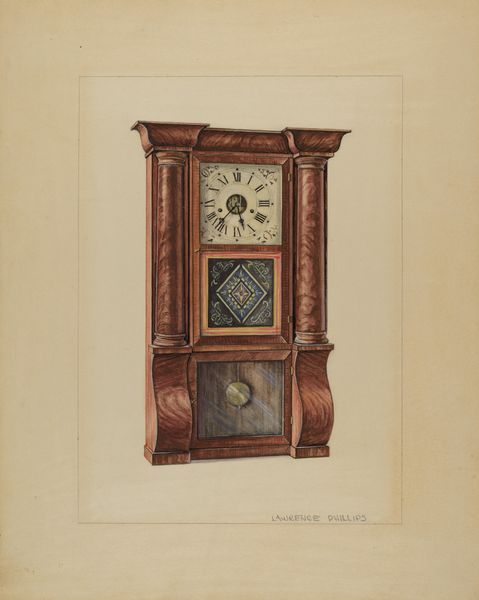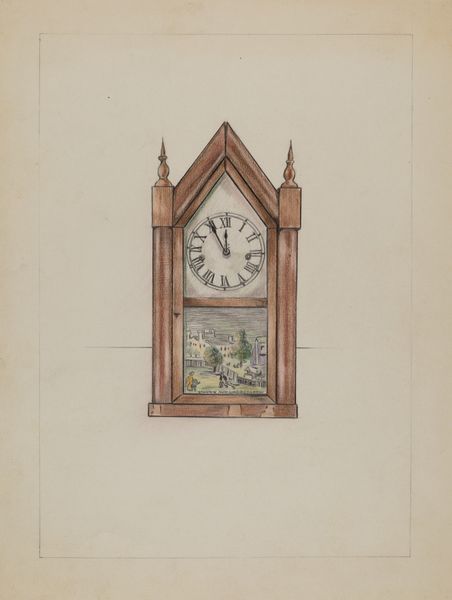
drawing, coloured-pencil
#
drawing
#
coloured-pencil
#
coloured pencil
Dimensions: overall: 29 x 22.5 cm (11 7/16 x 8 7/8 in.) Original IAD Object: 31 1/4" x 17 1/2 x 4 1/2"
Copyright: National Gallery of Art: CC0 1.0
Editor: Here we have Lawrence Phillips’ “Clock,” created around 1936 using colored pencils. The level of detail is impressive! I am struck by the way it feels so still, despite depicting something that's supposed to measure the passing of time. What can you tell us about this artwork? Curator: Considering its time of creation, we might view this work through the lens of the Works Progress Administration, a New Deal agency that employed artists to create visual records of American design and culture. Does this context alter how you perceive the artwork? Editor: That's interesting! So, it’s less about the clock itself and more about documenting it as a specific object from a specific era. I suppose it makes sense since many artists at the time depicted industrial subjects. But how does that connect with something as domestic as a clock? Curator: It suggests the artist or the agency considered it culturally significant, perhaps representing middle-class values of order and punctuality during a period of immense economic instability. We also have to consider the influence that art and architecture from prior generations has over the current socio-economic moment, or lack thereof. Did you pick up on the fact that it's a pendulum clock with a rather antique design, despite being created in the 1930s? What do you make of the artistic choices used by the artist? Editor: That is something I had noticed, yes, but I hadn’t fully considered its influence over socio-economic stability in that era. I like the color scheme though; there’s warmth. It isn’t necessarily an outstanding piece, but I appreciate what Phillips and the WPA were trying to achieve here. I wonder if there were some inherent biases when curating pieces such as these in order to give a particular impression of the socioeconomic background of the era... Curator: I think it would be interesting to explore exactly that. There may be quite a fascinating dissertation topic hiding here, and there’s always value in further interrogation of archival resources and biases when exploring any art period.. Thanks for this thoughtful discussion!
Comments
No comments
Be the first to comment and join the conversation on the ultimate creative platform.
